Youth Care Treatment Center and school has helped teens with PTSD all over the United States for 30 years. Our unique approach is based off of solid morals and beliefs to help adolescents be successful in turning their lives around.
Understanding PTSD
Learn about PTSD
Posttraumatic stress disorder (PTSD) is a mental health condition that develops after an individual has been exposed to one or more traumatic events and struggles with overwhelming feelings as a result.
Even though many people might view children as being resilient, there are many children and adolescents who struggle with PTSD after enduring a traumatic event. The symptoms of this disorder will bring about serious disruption and/or impairment in their functionality. Children who are afflicted with this condition might have trouble performing at school, might show behavioral disturbances, or might become very withdrawn or isolated from others. Luckily, there is treatment available that can help children battling PTSD push past their symptoms and establish the skills needed to work towards a positive future.
Statistics
PTSD statistics
Given the fact that many instances of child abuse and neglect go unreported and because many young people do not receive treatment following a trauma, it is difficult to fully account the prevalence of posttraumatic stress disorder among young people. However, some researchers have speculated rates of this disorder through recent research. It is estimated that between 3% and 15% of girls and between t1% and 6% of boys experience symptoms of PTSD.
Causes and Risk Factors
Causes and risk factors for PTSD
Environmental: The American Psychiatric Association (APA) states that environmental causes are the strongest determinants for the development of PTSD in young people. If a youth is exposed to chaos, violence, abuse, neglect, or other adversities, he or she is more likely to experience symptoms of posttraumatic stress disorder as a result. Additionally, if a child’s caregivers are absent during his or her formative years, whether by death or separation, or if the youth does not have appropriate coping skills, that young person is more likely to experience PTSD symptoms.
Risk Factors:
- Battling an extreme illness at an early age or witnessing a caregiver struggle with a serious illness
- Being raised in an institutional setting, such as an orphanage
- Being repeatedly moved from one foster care home to another
- Experiencing the death of someone important
- Surviving a natural disaster
- Suffering from physical, sexual, and emotional abuse, and/or neglect
- Having witnessed people being severely hurt or killed
- Family or personal history of mental illness
Signs and Symptoms
Signs and symptoms of PTSD
The signs and symptoms that might become noticeable when children or adolescents are struggling with posttraumatic stress disorder can vary based on many factors, including the child’s age, the support system he or she had after the trauma, and the severity of the trauma itself. Below are some examples of symptoms that a child or adolescent may display when battling PTSD:
Behavioral symptoms:
- Acting out aggressively
- Acting out sexually
- Participating in self-harming behaviors
- Bedwetting
- Exaggerated startle response
- Blatant avoidance of people and/or places
- Blatant avoidance of activities and/or events
Physical symptoms:
- Panic attacks
- Sleepwalking
- Vivid flashbacks
- Extreme physical reactions in response to reminders of the trauma (e.g. sudden tightening of muscles, pounding heart, rapid breathing, profuse sweating, nausea, etc.)
- Extreme sleep disturbances
Cognitive symptoms:
- Hallucinations (including seeing the traumatic event occur as if it is really happening)
- Night terrors
- Derealization
- Depersonalization
- Memory problems
- Having difficulty concentrating
Psychosocial symptoms:
- Intense feelings of anger
- Intense feelings of sadness
- Suicidal ideation
- Feeling detached from oneself
- Feeling emotionally numb
- No longer feeling an interest in things that one used to be interested in
- Diminished positive emotions
- Increased frequency and intensity of negative emotions
- Having a low sense of self-worth
- Intense feelings of fear and worry
- Strong feelings of loneliness
- Lacking the ability to trust others
Effects
Effects of PTSD
When children and adolescents struggle with PTSD and their symptoms have gone untreated, the effects that they may suffer from can be damaging to their wellbeing and can follow them into adulthood. Some of these effects can include:
- Suicidal thoughts and behaviors
- Overwhelming and chronic feelings of fear, anxiety, and worry
- Inability to develop trust in anyone
- Substance abuse, which could lead to addiction
- Social isolation
- Familial discord
- Inability to develop or maintain healthy interpersonal relationships
- Low self-esteem / low sense of self-worth
- Self-harm
- Development of additional mental health concerns
- Academic failure due to diminished academic functioning
Co-Occurring Disorders
PTSD and co-occurring disorders
Research has shown the individuals who are battling with PTSD are more likely to meet criteria for another mental health diagnosis than those who do not battle PTSD. Disorders that are most frequently occur alongside PTSD include:
- Oppositional defiance disorder (ODD)
- Bipolar disorder
- Substance use disorders
- Anxiety disorders
- Depressive disorders








